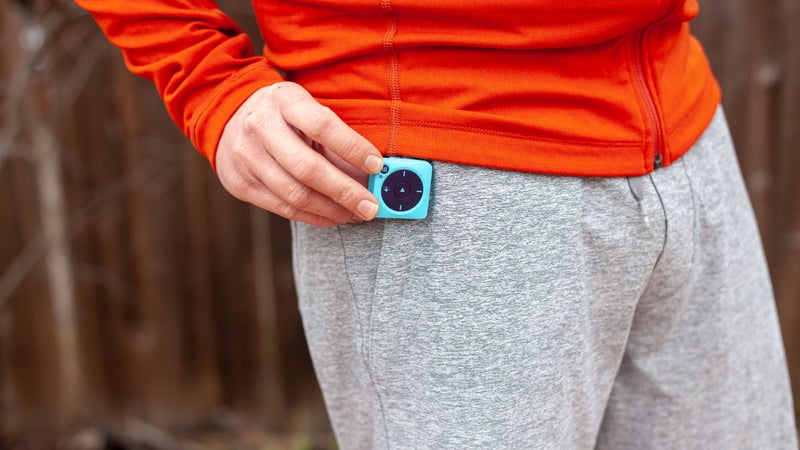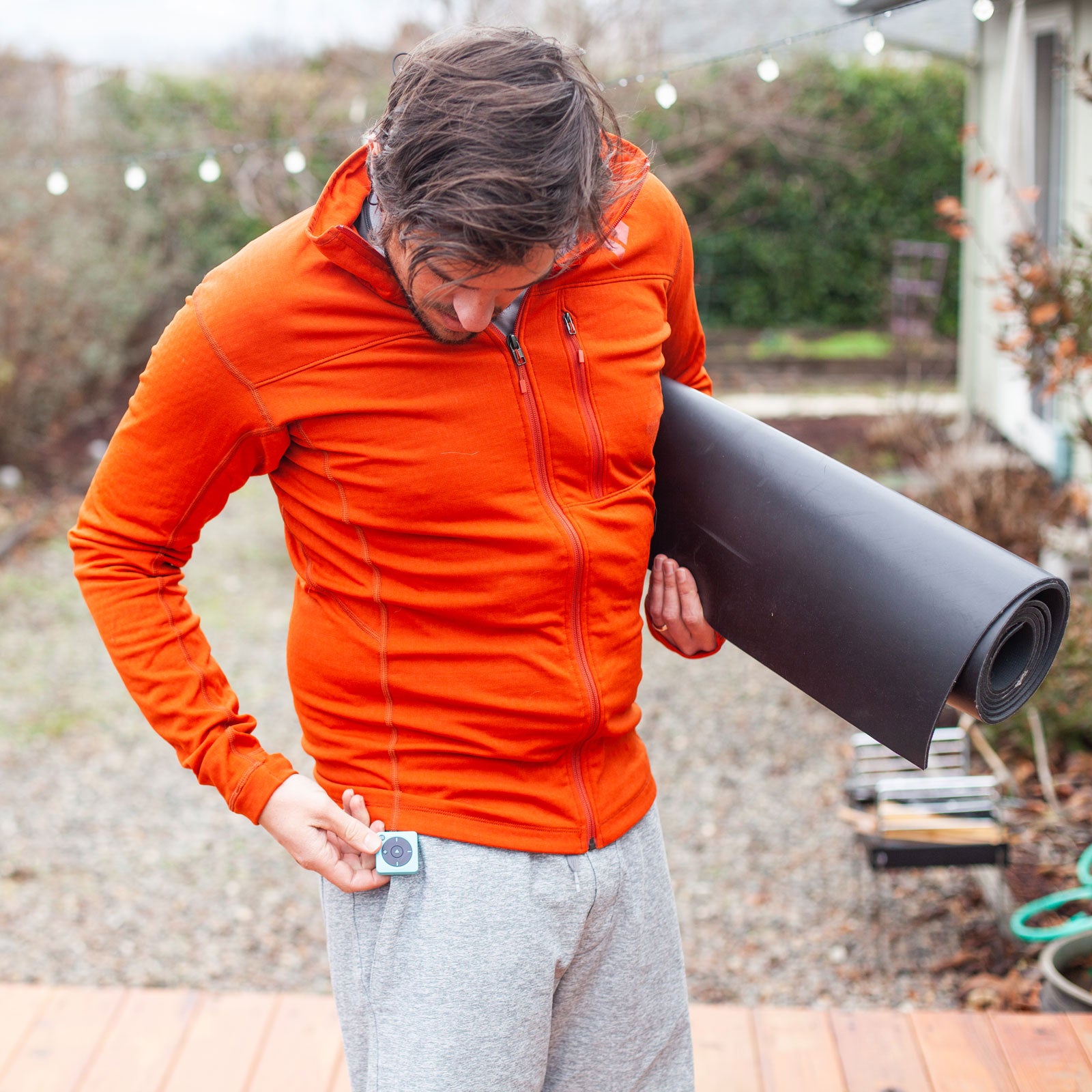This New Year, I resolved to be more consistent with my fitness regimen. As the father of a one-year-old, I’m no longer able to enjoy the long aimless runs, bike rides, and ski tours that used to keep me in shape, and I’ve put on some pounds as a result. I make do lifting kettlebells in my garage or on my back deck, running around my neighborhood, and working out at a Snap Fitness down the street from my house (something I’d never have considered when I had more free time). I’m not complaining though, because I have a secret weapon: ($86).
The device is a matchbook-size, 0.8-ounce Spotify music player. It has about five hours of battery life and Bluetooth compatibility for connecting to a phone or earbuds, and it syncs to my Spotify Premium account (through my phone) to hold about a thousand songs, which I toggle through using the simple five-button interface. Once the songs are synced, the Vibe doesn’t need to stay connected to the phone or internet. It’s become such a staple of my workouts that, if I realize I forgot it when I get to the gym, I immediately return home to pick it up. Why not just use your phone, you ask? Well, that’s my mobile office, and once I start tinkering on it, I get caught up in work. Also, my iPhone with its case takes up a lot of real estate in a pants pocket, whereas the 1.5-inch-by-1.5-inch Vibe goes unnoticed.
I usually clip it to my back pants pocket, press play, and let the music distract me from how bummed I am to be inside lifting weights. It’s never felt awkward during squats or fallen off during box jumps. When I first got the Vibe, I didn’t trust that the little plastic clip would hold, but it proved its mettle during an hourlong leg circuit.
I was worried that without a touch screen, the Vibe would be a pain to sync with my phone or my wireless headphones. But it was simple: have the device you want to connect with in Bluetooth search mode, hold a button on the Vibe, and it’ll chime once synced. Now when I’m at the gym, I just turn them both on, and they automatically connect without any fussing on my end.

That said, there’s a lot of syncing involved when using the Vibe, and you also need a Spotify Premium subscription. Fortunately, I already had one. And while going premium ($10 per month) might seem like an onerous extra expense, you’ll have access to over 35 million songs, which you can store on the Vibe in fresh thousand-song chunks.
The robotic voice that announces the playlists is remarkably awkward, mispronouncing artists and album titles (“Now playing Kenreek Lumer”) the way old dash-mounted GPS units butchered street names. But it’s grown on me. I give my Spotify playlists wacky names like Snaperdoo Roobeeroobee Roo, forcing the Vibe to pronounce them and giving me a little chuckle as I prep for another hellish set of burpees.
In the end, the Vibe is a triumph of simplicity. No one is going to call me on it. I won’t get a text from my editor reminding me that I am brutally behind on a deadline (a good excuse to flee the gym when my legs start to burn on the StairMaster). All it does is give me the playlists I want—and no distractions.


